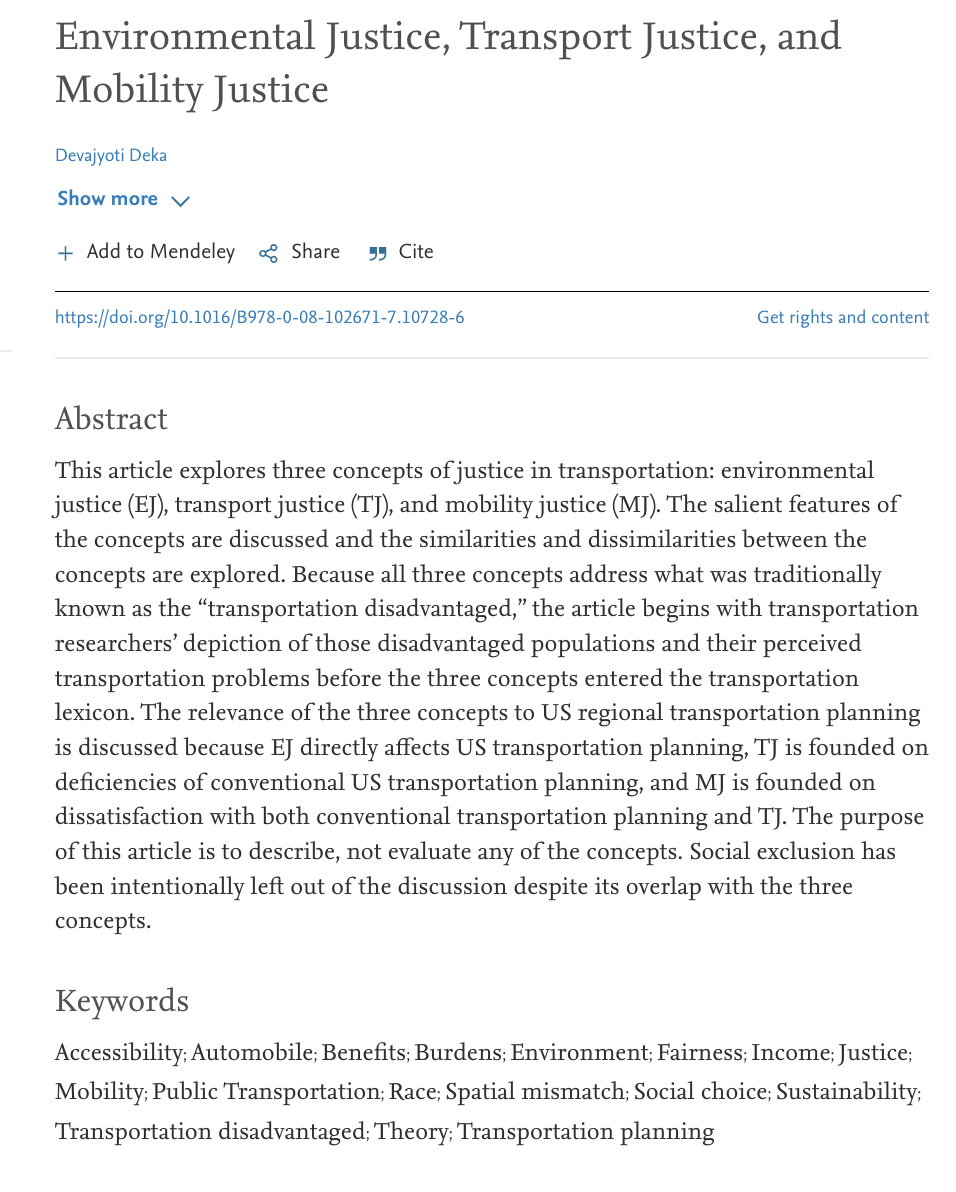Abstract
This article explores three concepts of justice in transportation: environmental justice (EJ), transport justice (TJ), and mobility justice (MJ). The salient features of the concepts are discussed and the similarities and dissimilarities between the concepts are explored. Because all three concepts address what was traditionally known as the “transportation disadvantaged,” the article begins with transportation researchers’ depiction of those disadvantaged populations and their perceived transportation problems before the three concepts entered the transportation lexicon. The relevance of the three concepts to US regional transportation planning is discussed because EJ directly affects US transportation planning, TJ is founded on deficiencies of conventional US transportation planning, and MJ is founded on dissatisfaction with both conventional transportation planning and TJ. The purpose of this article is to describe, not evaluate any of the concepts. Social exclusion has been intentionally left out of the discussion despite its overlap with the three concepts.
